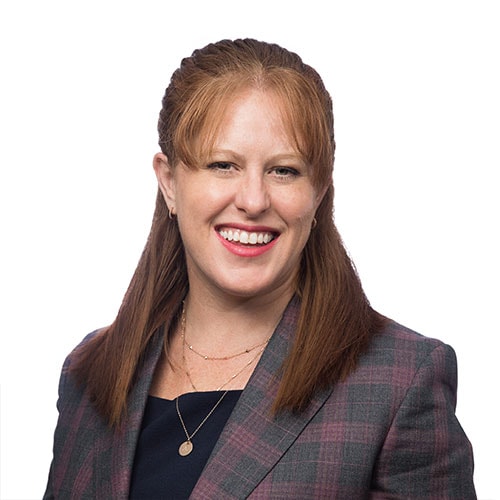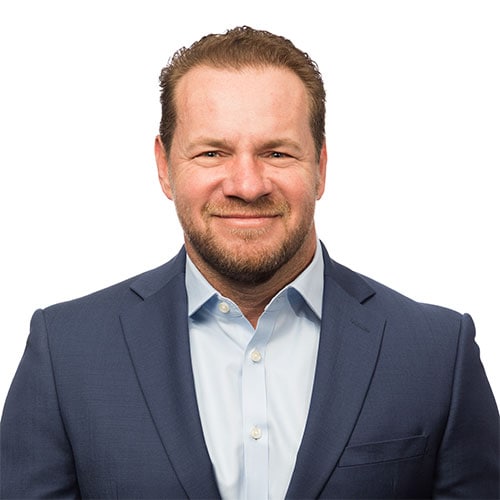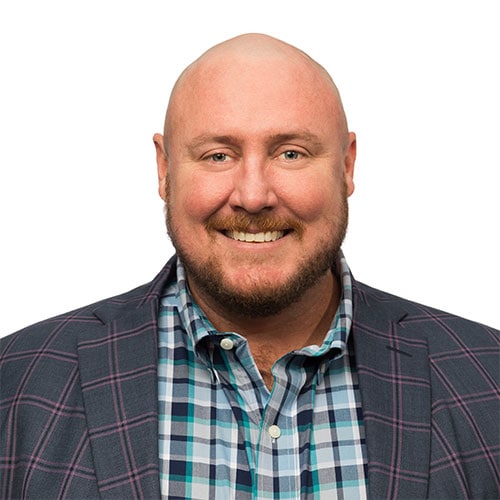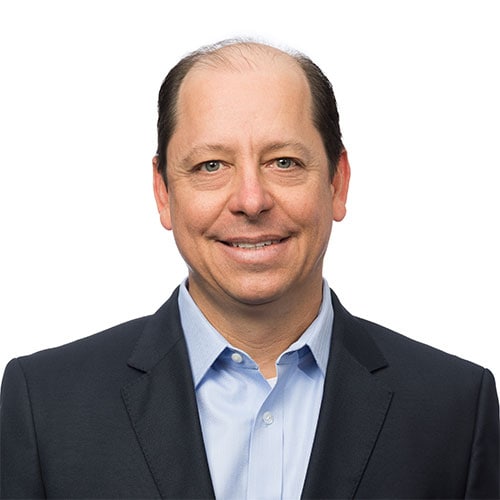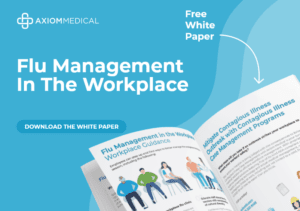[00:01] – Holly Foxworth
Well, good morning, and welcome to Axiom Medical’s first Fast Track to OSHA COVID Compliance, and this is our virtual summit this morning. We thank you for joining us. My name is Holly Foxworth. I am a registered nurse and the webinar host and also the marketing manager for content here at Axiom, and I’m really excited to bring you such a dynamic event this morning, so it can go through until two this afternoon. But we have a wide range of topics along with industry experts that are going to be able to get you some great information specific to the new changes and mandates by OSHA. So we will have a total of eight sessions today, and those will each be 30 minutes long. And so should you encounter any issues. Technical issues, please remember that the console that you’re looking at at the bottom, you should see several different buttons there. There will be one that has a question mark, and so you can simply select that, type in whatever your question is there. However, we are going to change things up a little bit from our traditional webinar format. Whenever it comes to the question and answer session, you’ll notice that at the top of your screen there, there should be a box that says breakout route. And so if you would like to speak with an Axiom representative at any point during the session today, simply click that “Join” button and that will get you in there, and you guys can communicate back and forth directly. We will also have our speakers that will be joining the Q & A session, and that will be immediately following the conclusion of the presentation, so they will be available, they’ll take your questions, you can ask them directly. We have cameras, you’ll see them. And so it will really kind of give you that one on one experience, even if you don’t have any questions yourself. But you just want to ask and listen to some of the questions we’re going to be asked by others.
So I think that is the majority of the things I need to mention early on. The final thing, though, is just in regards to how it is that you’re going to be able to navigate between the multiple sessions that we have going on here today. So at the conclusion, just remember that you’ll log out and you would need that access link to register for the following session that’s going to be coming up. So in the event that you have not already registered, there will be a prompt that will show up on your screen and it’ll have the session on there. There’s a button that says “Register Now”, you can simply select that, it will give you an access code, and then we will look for you then in the next session to join us. So I think that from my perspective, I think that sums things up. But I would like to introduce you, though, to our first speaker who is going to be delivering the keynote address. This is Dr. David Michael. He’s an Epidemiologist. He’s a public speaker, professor at George Washington University. And he’s also been the Assistant Secretary of Labor for OSHA. And he has some amazing information he’s going to be able to share with you today. So I’m going to go ahead and turn it over to you, Dr. Michaels, introduce yourself and we will get going.
[03:09] – Dr. David Michaels
Thank you, Holly. I’m really pleased to be here today. I know that you have a lot of questions. We’ll have some time for that later. So as you heard, I ran the Occupational Safety Health Administration for seven years under President Obama. I’m the longest-serving head of OSHA. I used to actually under President Clinton, I was actually Assistant Secretary of Energy. I was in charge of protecting workers and the public around the nation’s nuclear weapons complex. In the last couple of years, last year and a half, I’ve really been focused on COVID. And what I’m going to talk about today is what we know and what we don’t know about the upcoming Emergency Temporary Standard, though she’s going to put out, I think probably next week, she’s going to require large employers, employers with more than 100 employees to either make sure their workers are vaccinated or tested. It’s one of a suite of new regulations that the federal government is putting out or about to. It’s the only one actually without a firm vaccination requirement. So two regulations have been released already, one saying all federal workers have to be vaccinated, and the other that workers at federal contractors in certain jobs will have to be vaccinated. And we can come back to that later if you want. But two more are coming out. I think next week, as I said, one by the Center for Medicare and Medicaid Services, saying that health care workers have to be vaccinated and the OSHA standards, of course, we don’t know exactly what’s in the Emergency Temporary Standard that OSHA is putting out because it can be changed up to the last minute. Right now, there are meetings going on where stakeholders are at the White House saying this is what they’d like to see, what they don’t want to see, etc.
[04:49] – Dr. David Michaels
But we know more or less what the general contours so I could talk about that. Based on my understanding, what OSHA can do, what it can’t do, and also what other agencies are doing. And the reason that’s important is the federal government wants harmonization. The contractor rule, for example, says that if you’re an employer, you can’t just take your employees’ word for it, that they’ve been vaccinated. You have to have digital proof and that’s going to be, I assume, in the OSHA rule as well. So the basis of how OSHA works is the OSHA law, which is now 50, 51 years old, which says that employers have the responsibility, have the legal obligation to provide a workplace free of recognized serious hazards. It’s interesting, OSHA has no jurisdiction over workers. It only has jurisdiction over employers. And that’s what’s going to be applied here with the basic idea that OSHA’s job is to tell employers to make sure the hazards are out of the workplace. Of course, the hazard for COVID-19 is not simply the virus that’s in the air, but it’s the infectious worker who brings the virus into the workplace or other sort of setting. So the hazard, in some ways to think about is that worker. And so the OSHA regulation will say the employers, you have to make sure that when workers come into your workplace, they’re not infectious, and OSHA is going to treat this. I think primarily as a record-keeping regulation in that inspectors will expect to see how you keep track of these requirements. So the requirements are pretty straightforward. Workers fully vaccinated, which means they’re two weeks past their final shot, either an mRNA vaccine, the second dose, or probably the first dose of change that may change now and have to be a second dose. We’ll see. But two weeks after that and you have to keep track of that. And if someone is not vaccinated, you have to keep track of their testing and they have to be tested every week.
[06:57] – Dr. David Michaels
Now, once the rule goes into effect, you’re going to have to give workers time off to get vaccinated and time off to recover. How much time? I suspect OSHA will say something like a reasonable amount of time. I don’t think they’ll tell you how much, but then they’ll leave it up to you. But you’ll have to have a program that says this is what we are offering. It’s worth noting that right now, if you require vaccination or if you encourage vaccination, you actually do not legally have to give time off for either the vaccination or for recovery. Obviously, I think you’ll likely get a better pick-up if you do. Now, the testing is a much bigger question, and we don’t know. My guess is OSHA is going to allow antigen testing and not actually a PCR test, which is more expensive and takes longer. But what they’re wrestling with now, when they coordinate with CDC, I’m sure are these questions as like, what’s the proof of testing? How do you know a worker has been tested negative? It has to be a negative test within the last two weeks. And of course, who pays for that test? Are workers given time off to take the test? I suspect that you will be asked to pay for the test. Why? Well, I think there are equity issues, certainly, for low-wage workers to ask them to find the test, which is difficult and to get tested, is burdensome on them. And I think the government would prefer to put this on the medium-sized and large employers who are covered by this rule. Of course, this rule, as many of you probably know, does not cover small employers or employers with less than 100 workers. But larger employers, I think, will probably be told you have to pay for the testing to keep track of it. The reason for that, in some ways, is unsaid. But the philosophy behind all of these government efforts is the increase of the vaccination rate. I think the White House and the government in general and the public health community understand that the most effective way we’re going to control this pandemic is by increasing vaccination rates. So while testing is useful, it doesn’t increase vaccination rates, it doesn’t really slow down the pandemic as much as we’d like.
[09:17] – Dr. David Michaels
And so I believe that if employers are told you can vaccinate or you can test, but you’ll have to pay for the test and you’ll have to go through all sorts of requirements to keep track of that, it will be much easier for employers to say, Well, we’re just going to require all of our employees to be vaccinated. Of course, there are medical exceptions and religious exceptions, and we can get to them now or in the questions. But in general, I think the general approach is trying to say, look, get your people vaccinated. And some businesses have already announced mandatory vaccination policies, and you’ve read about that, and they’ve been very successful. United Airlines has reached a 99% compliance rate with their vaccination requirements. Now the headlines were that United had to let go 600 employees, and it sounds like a lot to some people. But United has 67,000 employees, so it’s less than 1%. It’s really not outside normal turnover. Other employers are negotiating with their unions. The most well-known example of that is Tyson’s, and that’s a very different workforce than United. United has pilots and flight attendants, maintenance people who are highly skilled, folks who work behind counters at airports where Tyson’s is a large meat, beef, pork, and chicken producer. They have workers who are less educated. They do a blue-collar job, a large number of immigrant workers, minority workers. Some skepticism of the government. What Tyson did was negotiate with the food and commercial workers, additional sick time, and some vacation time in exchange for compulsory vaccinations. And they’re up to 96% have gotten vaccinated, so they won’t have to worry very much about this OSHA rule because all their people are vaccinated. So one question I often get about the OSHA rule and all OSHA rules is how will it be enforced? For the most part, OSHA regulations are self-enforced. Employers, businesses, like all the ones you work for, have HR departments, they have attorneys, they have safety offices. And when they learn about a new regulation, whether it’s from OSHA or any other government agency, the first question is not how will they enforce it? But how will we comply? Because you’re law-abiding whatever the law is, you want to follow it. You may not like all the requirements of the law, but you understand that it’s your job to follow the law. So for the most part, this regulation will be self-enforced. You will do what the government says, of course.
And that’s what we’ll discuss how you get there. But OSHA also will do inspections. And OSHA and the state partners have about 2000 inspectors. And then there are other inspectors in the Labor Department who can follow up on this as well. And so when they do random inspections in a construction site or a factory or warehouse, they will say, right now or once this goes into effect, let me see your records. How are you keeping track of who’s vaccinated and who is tested for people who are on-site? Now, if you have workers who are working from their homes, my guess is they don’t have to be vaccinated or tested. But if you want them to come in and they come in contact with other workers, they have to be vaccinated or tested. And you got to keep track of that. And so just as an OSHA inspector comes in and says, Let me see your OSHA law. Let me see your injury and illness records. Let me see your hazard communication program. They will say, Let me see your vaccination testing program. So that will be some inspections. In addition, workers will complain, they’ll be workers who, for whatever reason, don’t believe that you’re doing the right thing. And they will call OSHA. And OSHA will follow up. Most likely, I believe, with a phone call or an email. And again, you’ll have to provide your records. There’ll be some interesting challenges for OSHA to figure out. This regulation says employers with 100 or more employees will be covered, that’s different than OSHA usually works. OSHA usually works by the establishment and each workplace is treated as a unit. But this says 100 or more workers across state lines, perhaps in the whole country. Of course, many of you know that OSHA has a system of state plans. It’s sort of a mosaic. There are 21 States, plus Puerto Rico, that have their own state plans that are overseen by OSHA. And by law, they have to be at least as effective as OSHA, but they have their own regulations.
[14:05] – Dr. David Michaels
And so when OSHA issues this regulation, it will tell state plans you have a certain amount of time. It could be a week, it could be a month, but it’ll be pretty fast. You have to adopt a regulation at least as strong, at least as protective as the one OSHA put out. And so some states will do that quickly. California, Oregon, Washington, will just do this as fast as they possibly can. Other states will take their time. Some states, like, I believe, South Carolina has already said they’re not going to do this. And OSHA has made very clear to those states that they could come in and they could actually take over the state program if they don’t do this. So I think they may. It’s an interesting threat. It’s a threat that OSHA has made before, has never had to follow through. But it could happen in this case, that’s the basic framework. We could talk a little bit in questions about some of the exemption issues and things like that. But that’s the basic information that you have to know. And I’ve learned from a lot of employers. And this is true of all the OSHA standards. When you see an OSHA standard coming, you’re doing what you’re doing today, you’re trying to figure out what do you need to do even before the standard comes out, and you start that process because you know you’re going to have to do it. So you might as well start doing it now. So I’m looking forward to your questions and let’s move over to the breakout group.
[15:34] – Holly Foxworth
I love it. Great job. That was excellent information, Dr. Michaels. You did a fantastic job. Just to kind of sum things up and give you an idea of where we go from here. We do have the breakout rooms that are there, and so you will be able to interact directly with Dr. Michaels if you have some additional questions, and he will take those. We also have I believe in some Axiom representatives in there as well. So if you click on that button, it’s there on the right-hand side of your screen, at the very top, and that will take you directly to the breakout room. Just as a reminder, we also have the additional sessions that are going to be coming up. If you have not registered for those yet, please remember that whenever you close out this particular screen, there’ll be a prompt that comes up that says what the next session will be, which actually is going to be specific to legal and HR implications that are associated with the mandate here. And that is going to be hosted by Axiom’s Chief Legal and HR Officer Chuck Kable. So he’s going to do a great job as well. Again. Thank you, Dr. Michaels. I look forward to seeing all the questions that are going to be asked there in the breakout rooms, and then we will see you guys at the next session. Thank you.



